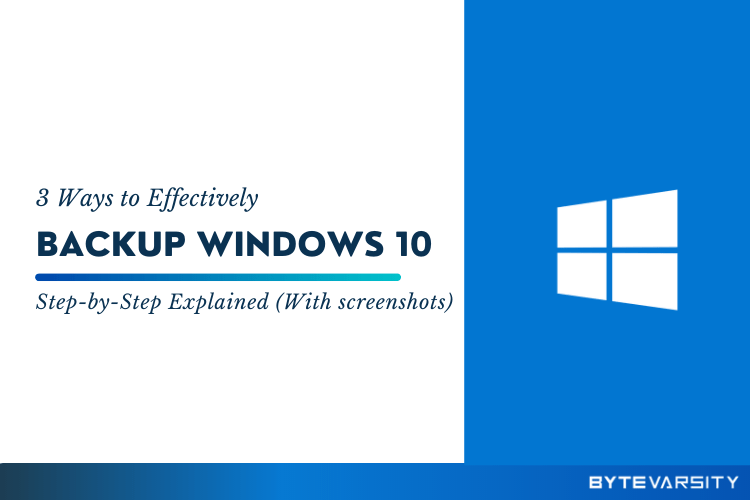How to Setup a 4k Monitor on Windows 10?

A 4K monitor, also known as Ultra High Definition (UHD) monitor, is a display that has a resolution of 3840×2160 pixels, which is four times the resolution of a standard 1080p display. This means that a 4K monitor can display more detail and provide a clearer and sharper image compared to a lower resolution monitor.
There are many benefits of using a 4K monitor with Windows 10. The first benefit is more screen real estate. With a higher resolution, a 4K monitor can display more information on the screen, which is particularly useful for productivity tasks such as video editing, photo editing, or programming. With a 4K monitor, you can have multiple windows open side by side, and you won’t need to switch between them as often, which can save time and increase productivity.
The second benefit is sharper and more detailed images. A 4K monitor can display more pixels, which means that images and text will appear much sharper and more detailed compared to a lower resolution monitor. This is particularly important for tasks such as photo editing, video editing, and graphic design, where color accuracy and detail are crucial.
Another benefit of using a 4K monitor with Windows 10 is that it can enhance your gaming experience. Many modern games support 4K resolution, and with a 4K monitor, you can enjoy games in their highest resolution, which can make them more immersive and realistic.
Contents
Connecting The Cable:
Connecting a 4K monitor to your computer is a relatively simple process that can be done in a few steps. Here is a step-by-step guide on how to connect a 4K monitor to your computer:
- Check the ports on your computer: Before connecting the 4K monitor, check the ports on your computer to ensure that you have the correct cables. Most modern computers will have an HDMI or DisplayPort, which are the two most common cables used to connect a 4K monitor.
- Connect the cable to the monitor: Once you have the correct cable, connect one end of the cable to the 4K monitor. Most 4K monitors will have multiple ports, so make sure to choose the correct port that matches the cable you are using.
- Connect the cable to the computer: Once you have connected the cable to the monitor, connect the other end of the cable to the computer. Again, make sure to choose the correct port that matches the cable you are using.
- Turn on the monitor: Once the cable is connected to both the monitor and the computer, turn on the 4K monitor by pressing the power button.
- Configure the display settings: After turning on the monitor, your computer should automatically detect it and configure the display settings. If the 4K monitor is not automatically detected, you may need to adjust the display settings manually by going to the Display Settings in the Windows 10 Control Panel.
- Test the monitor: Once the 4K monitor is connected and configured, test it by opening an application or game that supports 4K resolution. Check the settings in the application or game to ensure that it is set to 4K resolution.
In summary, connecting a 4K monitor to your computer is a simple process that involves checking the ports on your computer, connecting the cable to the monitor and the computer, turning on the monitor, configuring the display settings, and testing the monitor with an application or game that supports 4K resolution.
Set Resolution and Scaling:
Setting the resolution and scaling on a 4K monitor can be important for getting the best display quality and readability. Here are the steps to set resolution and scaling on a 4K monitor in Windows 10:
- Open the Display settings: Right-click on the desktop and select Display settings from the context menu.
- Adjust resolution: Under the Display settings, scroll down to the “Scale and layout” section, and click on the “Resolution” drop-down menu. Select the desired resolution, which should be 3840×2160 for a 4K monitor.
- Adjust scaling: After selecting the resolution, you can adjust the scaling to improve the readability of the text and icons on the screen. Click on the “Scale and layout” drop-down menu, and select the desired scaling option. Windows 10 offers a variety of scaling options, ranging from 100% to 300%. The recommended scaling option for a 4K monitor is usually 150%, but you may need to experiment with different scaling options to find the one that works best for you.
- Apply changes: After adjusting the resolution and scaling, click on the “Apply” button to save the changes. If the changes do not appear immediately, you may need to sign out and sign back in to your user account to apply the new settings.
- Test the settings: Once you have applied the new resolution and scaling settings, test them by opening an application or website that has small text or icons. Make sure that the text and icons are clear and readable, and adjust the scaling settings if necessary.
In summary, to set the resolution and scaling on a 4K monitor in Windows 10, open the Display settings, adjust the resolution and scaling options under the “Scale and layout” section, apply the changes, and test the settings to ensure that the text and icons are clear and readable.
Set Refresh Rate:
Setting the refresh rate on a 4K monitor is important for ensuring smooth and fluid motion in videos, games, and other applications. Here are the steps to set the refresh rate on a 4K monitor in Windows 10:
- Open the Display settings: Right-click on the desktop and select Display settings from the context menu.
- Click on “Advanced display settings”: Under the Display settings, scroll down and click on “Advanced display settings” at the bottom of the page.
- Select the monitor: If you have multiple monitors connected, select the 4K monitor that you want to adjust the refresh rate for.
- Click on “Display adapter properties”: After selecting the monitor, click on the “Display adapter properties” link at the bottom of the page.
- Select the “Monitor” tab: In the Display adapter properties window, click on the “Monitor” tab at the top of the window.
- Select the refresh rate: Under the Monitor settings, select the desired refresh rate from the drop-down menu. The refresh rate options may vary depending on your monitor and graphics card, but a 4K monitor can typically support refresh rates of up to 60Hz.
- Apply changes: After selecting the desired refresh rate, click on the “OK” button to apply the changes. You may need to sign out and sign back in to your user account to apply the new settings.
- Test the refresh rate: Once you have applied the new refresh rate settings, test them by opening an application or video that supports high refresh rates. Make sure that the motion is smooth and fluid, and adjust the refresh rate settings if necessary.
In summary, to set the refresh rate on a 4K monitor in Windows 10, open the Display settings, click on “Advanced display settings”, select the monitor, click on “Display adapter properties”, select the “Monitor” tab, select the desired refresh rate, apply the changes, and test the settings to ensure smooth and fluid motion.
Update Display Drivers:
Updating the display drivers on a 4K monitor can help improve the performance and compatibility of the monitor with your computer. Here are the steps to update the display drivers on a 4K monitor in Windows 10:
- Open the Device Manager: Right-click on the Windows Start button and select “Device Manager” from the context menu.
- Expand the Display adapters: In the Device Manager window, expand the “Display adapters” section to see the display driver(s) installed on your system.
- Update the driver: Right-click on the display driver that you want to update and select “Update driver” from the context menu.
- Choose how to search for the driver software: In the “Update Drivers” window, select “Search automatically for updated driver software” to let Windows search for the latest driver online, or select “Browse my computer for driver software” to manually install the driver that you have downloaded from the manufacturer’s website.
- Install the driver: Follow the on-screen instructions to complete the installation of the updated driver.
- Restart your computer: After installing the updated driver, it is recommended to restart your computer to ensure that the changes take effect.
- Test the display: Once your computer has restarted, test the display to ensure that it is working properly.
In summary, to update the display drivers on a 4K monitor in Windows 10, open the Device Manager, expand the “Display adapters” section, right-click on the display driver that you want to update, select “Update driver”, choose how to search for the driver software, install the driver, restart your computer, and test the display to ensure proper functioning.
Conclusion:
In conclusion, setting up a 4K monitor on Windows 10 involves several steps, including connecting the monitor using the correct cable, setting the resolution and scaling, adjusting the refresh rate, and updating the display drivers. While the process may seem overwhelming, following these steps can help ensure that the 4K monitor is set up properly and that it provides the best possible visual experience.
With a properly configured 4K monitor, users can enjoy the benefits of increased screen real estate, sharper images, and more vivid colors, making it an excellent choice for content creators, gamers, and professionals alike.




![[Fix] Win32 Malware Gen Issue – Removal Guide 2023 5 [Fix] Win32 Malware Gen Issue – Removal Guide 2023](https://bytevarsity.com/wp-content/uploads/2021/02/What-is-Win32-Malware-Gen-–-Complete-Answer-min.png)

